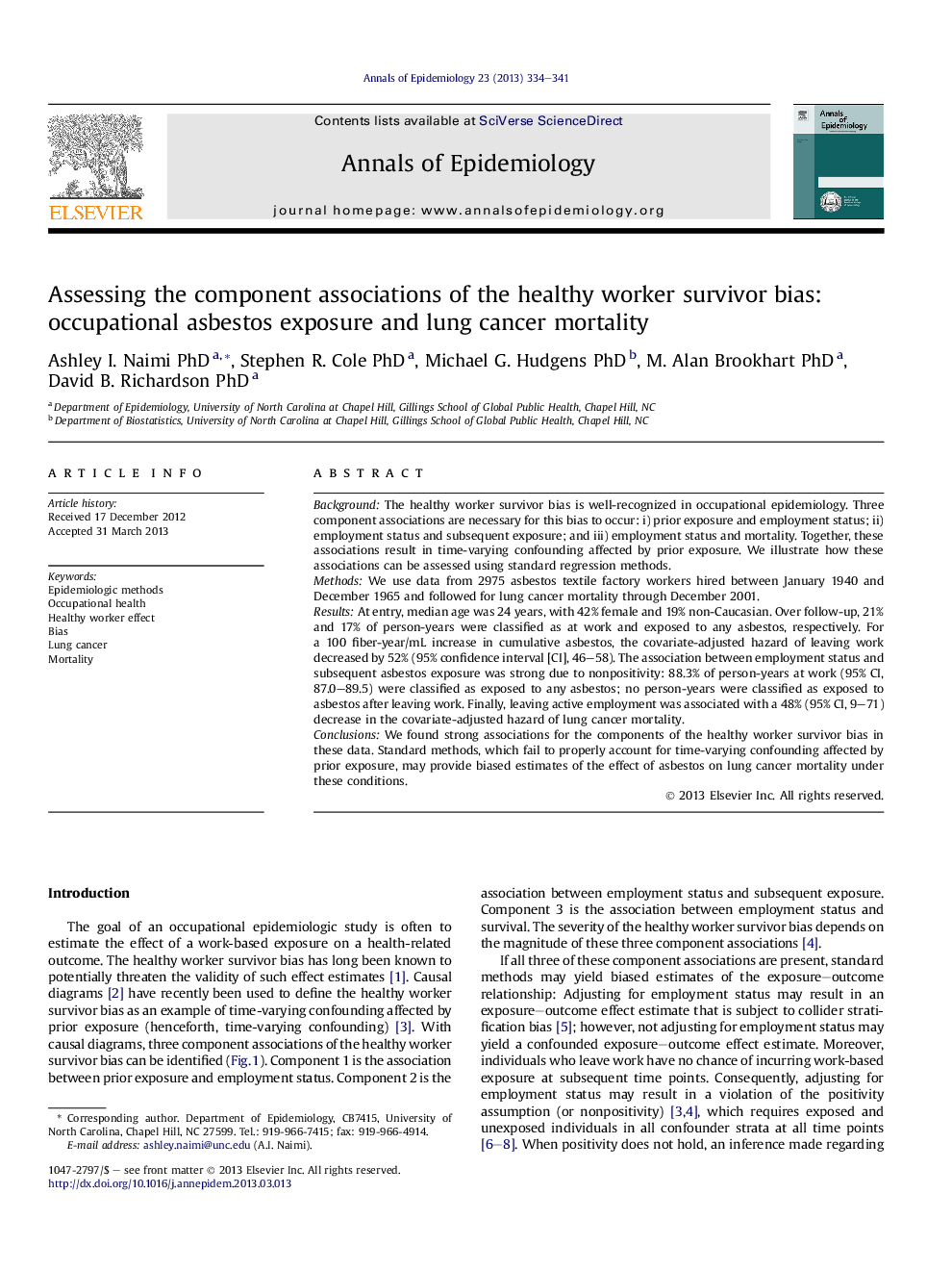| Article ID | Journal | Published Year | Pages | File Type |
|---|---|---|---|---|
| 3444209 | Annals of Epidemiology | 2013 | 8 Pages |
BackgroundThe healthy worker survivor bias is well-recognized in occupational epidemiology. Three component associations are necessary for this bias to occur: i) prior exposure and employment status; ii) employment status and subsequent exposure; and iii) employment status and mortality. Together, these associations result in time-varying confounding affected by prior exposure. We illustrate how these associations can be assessed using standard regression methods.MethodsWe use data from 2975 asbestos textile factory workers hired between January 1940 and December 1965 and followed for lung cancer mortality through December 2001.ResultsAt entry, median age was 24 years, with 42% female and 19% non-Caucasian. Over follow-up, 21% and 17% of person-years were classified as at work and exposed to any asbestos, respectively. For a 100 fiber-year/mL increase in cumulative asbestos, the covariate-adjusted hazard of leaving work decreased by 52% (95% confidence interval [CI], 46–58). The association between employment status and subsequent asbestos exposure was strong due to nonpositivity: 88.3% of person-years at work (95% CI, 87.0–89.5) were classified as exposed to any asbestos; no person-years were classified as exposed to asbestos after leaving work. Finally, leaving active employment was associated with a 48% (95% CI, 9–71) decrease in the covariate-adjusted hazard of lung cancer mortality.ConclusionsWe found strong associations for the components of the healthy worker survivor bias in these data. Standard methods, which fail to properly account for time-varying confounding affected by prior exposure, may provide biased estimates of the effect of asbestos on lung cancer mortality under these conditions.
